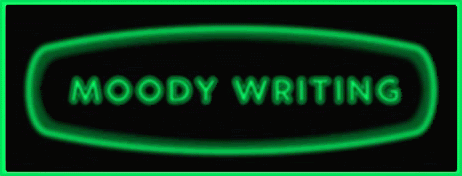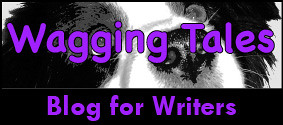The writer is a time traveller. He can see the whole of existence at once. He knows the end as well as the start. When someone says something that doesn’t make sense now, but will have an impact many pages from now, the writer smiles knowingly. All information is available to him. The problem is the rest of us are mere mortals who can only start at the beginning and work our way from one moment to the next, and when someone says something seemingly meaningless, that's all it is.
Leading the reader from A to B is not something where you can just set off and be confident you’re going to be followed. There’s no point relying on stuff that happens later to satisfy the reader if the reader never gets that far. The idea that ‘It will all make sense if you keep reading...’ is not taking into account how readers read. We keep reading because we like what we’ve read so far and want more. We don’t think ‘This isn’t working, I should keep reading and maybe it will...’
Each scene or chapter has to be engaging in its own right. Even if certain information needs to be conveyed, you can do that while other stuff is happening. Jack can tell Dave about an old school teacher who will turn up later in the story. But he can tell him that anecdote while they are in the middle of robbing a bank. Obviously it doesn’t need to be quite that extreme, but it shouldn’t be just them hanging out or driving in a car. It should tells us something about these specific characters.
Information without insight into the characters leads to a flat narrative, a shopping list of facts. The insight should be revealing and unexpected. Jack doesn’t like ice cream, not interesting; Jack doesn’t like ice cream so much he beats up ice cream van drivers at every opportunity, interesting. Your job isn’t to convey a clear picture of your character, it’s to convey a clear picture of your interesting character. You show that they are interesting by their story and how they react to those events. Action reveals character so it is important you use the plot to show off those aspects of the character you think are interesting.
For the reader the story is what happened to this interesting character, but for the writer the story is how you convince the reader the character is interesting. You can do this because you are God and can make it happen the way you want. If Jack can talk his way out of trouble you have to make sure you give him the opportunity to use that talent. If you don’t make it clear why your characters are worth reading about it will be a long, slow, flat story.
This is especially true for vague, enigmatic starts of stories. If there are a lot of questions at the start of the book, that will not make the reader extra curious and keen to read more. If three people tell you they know something really interesting, how many of them really do know something interesting? And how can you tell which they are? Now imagine there are three hundred people telling you that.... or three thousand. Because that’s what every writer is claiming.
Consider:
I know something you don’t know.
I know something you don’t know about your father.
I know something you don’t know about your father’s first wife and how she really died.
Of those examples the premise of the story gets more interesting as more information is revealed. But that doesn’t mean spill everything straight away. What I’m doing is specifying what the story is about and how it affects the reader. I still haven’t gone in to how or why or the consequences, which is what story is all about.
So: Jack knows something Jill doesn’t know... may sound like an intriguing and potentially thrilling idea, but :
Jack knows something Jill doesn’t know about her father’s first wife and how she really died... is much stronger because you can see why Jill would want to know, so you want to know too.
The only difference is that now that the reader knows what it’s about they might decide they don’t like the sound of the story, for whatever reason, whereas with the vague premise they don’t know enough to know if they like it or not. It’s a cheap trick and is based on being insecure about the idea. If I tell people, then they might hate it, so I won’t tell them until the very last minute... but if you have that little faith in the story, why would anyone else be into it?
There are no hard and fast rules, but a bunch of stuff that happens needs some kind of structure. That structure can take a variety of shapes but the end result serves the same purpose: What happens next? There are natural storytellers who have stories people want to hear and they just have a gift of dropping in the right information at the right time to keep the pages turning. They can even write in a terrible style and get away with it because it isn’t style that is the limiting factor, people just have to want to know what happens next. And that can be in the middle of an Egyptian pyramid, or in a supermarket. The scale of the issue in question is irrelevant. What matters is how interesting is the thing that’s happening and what kind of a person is it happening to.
A series of events don’t automatically make an interesting story. I was thirsty so I went to the supermarket to buy a drink and I met a guy I hadn’t seen since college and we reminisced about our youth... do you want to know what happened next? I’m guessing not. It could lead to an exciting story, but so could a blank page. Let’s say meeting the old friend leads to talk of an old girlfriend who killed herself recently and from the way she died our hero knows it can’t have been suicide etc. That’s the plot but you don’t want to start in the middle of ‘Hey, Jack, it’s me, Dave, your old college buddy...’ you want to build it up, have some set up and let us meet our hero first — how do you do that without boring the reader?
If, for example, you want to get him from his house to the shops where he will bump into his old friend, then make the journey interesting. To do that all you have to do is put an obstacle in his way. Not just him noticing something or making observations, literally an obstacle to his journey. So maybe someone’s tied up their dog outside the store entrance and it’s decided to guard the way in. How does our hero get past?
This may not appear to have anything to do with the story of the dead girl, but under the surface all events in a story have the same goal, to reveal character. And if I do that while maintaining the reader’s interest in what happens next (with a dog or whatever) that makes us feel like we know him better, and it will be interesting. But how he gets past the dog should be unexpected, nothing is less interesting than the easily predictable or obvious. If I tell you Jack breathes air it would be true, but since everyone breathes air it is not very revealing. If I tell you he can breathe underwater, that’s revealing. So, if he just runs past the dog that won’t tell us much, who wouldn’t do that? You have to take away all obvious options and then see what he comes up with, that’s when you see what kind of person he is.
The unexpected and how we deal with it is what makes a story interesting. It gives the narrative a shape we can hook into and keeps those pages turning. But unexpected doesn’t mean a UFO has to land in the garden.
A man goes to pick up his kid from school. If you describe his journey you can easily portray this event in a fairly dramatic fashion. There’s traffic, there’s a meeting he should be attending, his kid’s in trouble for fighting... but if he deals with these things as any normal person would (gets annoyed, apologises, hurries etc.) it won’t be very engaging.
What you have to do is think about what kind of a guy he is and how can you show that through his actions?
A traffic cop tries to give him a ticket but he talks his way out of it. He calls the secretary and sweet talks her into pushing back the meeting in exchange for a date. His kid has detention but he arranges another date with his teacher and gets his kid off.
Now you have an idea what this guy is like. Even though the main story hasn’t started yet, learning about him through his actions makes him a distinct person who we can relate to. However, even though his reactions give us an insight, they pretty much all give us the same insight. It’s not a flat narrative, but it isn’t very varied. You can get away with this sort of thing, especially if the events are a little less run of the mill than the ones I’ve come up with, but it’s still pretty inefficient to just hammer the same nail over and over.
A traffic cop tries to give him a ticket but he talks his way out of it. He calls the secretary and tries to sweet talks her into pushing back the meeting, but she’s unimpressed, so he calls his partner and talks him into pulling the fire alarm and clearing the building. His kid has detention, but when he tries to arrange a date with his teacher to get his kid off, the kid cuts him off and accepts the detention as justified and gets his dad out of there as quickly as possible.
Now you have a much clearer idea of this guy and the narrative is giving you a variety of angles on him. Some problems are easily solved, some require extra thinking, some fail – but they all tell us something about our hero and when he gets into the real plot of the story we will feel we have a connection to him.
In summary:
1. To make the reader want to know what happens next make life difficult. Easy is boring.
2. Make the hero come up with an unusual response. If it’s what everyone would do then it’s not worth doing.
3. The same behaviour shouldn’t always get the same response. Mix it up.
4. The scale of problems should vary, but they should all prove difficult to overcome.






































































































2 comments:
I agree with all of this. Trial and error, reading and critiquing (and being critiqued) have helped me grow exponentially in this aspect, and I still have a long way to go ;)
Thanks for the informative post!
Contrast is good. Sometimes if doing something one way works the first time, it's interesting when a character tries to use it again and it backfires.